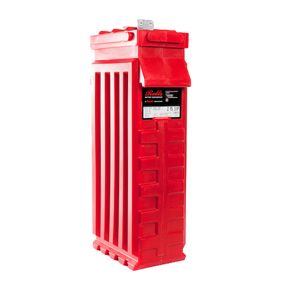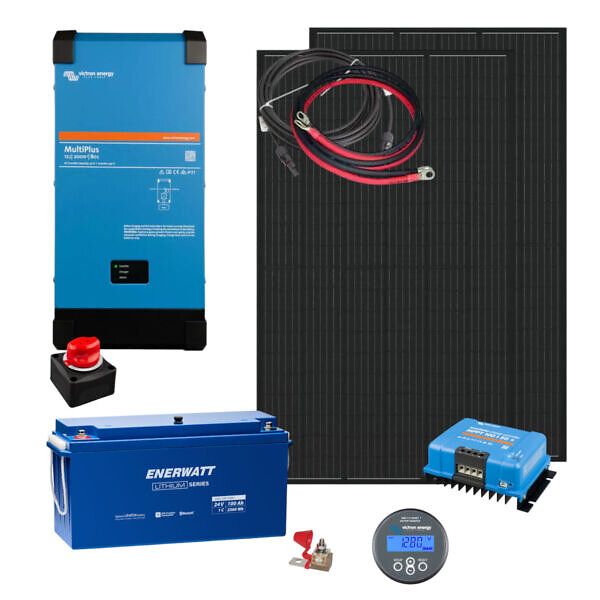Rolls-Surrette 2 YS 31P deep-cycle 2V battery, 2527Ah/20h capacity, 5 years warranty (minimum order qty.)
Rolls-Surrette 2 YS 31P
Call for price
Rolls Surrette has built a solid reputation over the years as one of the best, if not THE best, sources of deep-cycle batteries for renewable energy systems. Their batteries feature a high cycle life with thick positive battery plates and a large liquid reserve. Surrette batteries are known for their unsurpassed reliability.
The 5000-series batteries are designed specifically for renewable energy applications, they are the longest-life batteries on the market, and come with a solid 5 years full warranty. With good battery care many get 17 to 20 years of service out of these batteries. Our battery care instructions can help get the most out of your batteries.
Lead-Carbon Batteries
The Rolls 4500- and 5000-series have been updated to use carbon-enhanced negative electrodes, Rolls calls it “Advanced NAM Carbon Blend”. Carbon-blend and partial carbon negative electrodes help greatly against (permanent) sulphating of the battery, and to get many more cycles out of it. In practical terms this overcomes the biggest weakness of the lead-acid chemistry; lead-carbon batteries can sit at partial-charge for long periods of time without the need for a full 100% charge, and all that without ‘hard’ sulphating (the type that results in permanent capacity loss). This shows in an astounding 4300 cycles at 50% Depth-Of-Discharge, using IEC 61427-1, which simulates real-life off-grid working conditions that batteries face, including sitting at partial charge for some time.
Batteries with a partially carbon electrode were first developed in the early 2000’s by CSIRO, the Australian government research institute. They called it the “UltraBattery” because it was designed as a hybrid supercapacitor and lead-acid battery. They found that another effect of the carbon electrode was batteries no longer sulphated, resulting in a cycle-life of tens of thousands of cycles! The UltraBattery could sit at partial charge forever, without detrimental effect. A separate carbon electrode is expensive to make, and it was found that simply adding carbon to the mixture that forms the negative plate had a similar effect. In fact, adding carbon to the negative plate does not meaningfully change the production cost of the battery. The lead-carbon battery was born: A regular lead-acid battery with carbon added to the negative plate. While not quite as good as a separate carbon electrode, Lead-carbon batteries turned out to be much less sensitive to sitting at partial charge for long periods (a full charge cycle is still recommended every now and then), and they have dramatically improved cycle-life vs. a regular lead-acid battery. The future of lead-acid batteries has arrived!
Low Water Use
The 5000-series batteries come standard with R-CAP recombiner vent caps (the same as the “Water Miser” caps). These minimize water use, and cut down nearly 100% on the sulpheric ‘mist’ that batteries produce.
Adding batteries in series increases the Voltage, while keeping the Amp-hour size the same. Adding batteries in parallel keeps the Voltage the same, while increasing the Amp-hour size of the battery bank. For example, two S6 L16-HC batteries in series makes for a 12 Volt / 445 Ah battery bank. Adding another string of two S6 L16-HC batteries in parallel to these will increase the bank size to 12 Volt / 890 Ah.
Recommended Charge Settings (at 25C)
| Charge State | 12 Volt | 24 Volt | 48 Volt |
|---|---|---|---|
| Bulk | 15.0 Volt | 30.0 Volt | 60.0 Volt |
| Absorb | 15.0 Volt | 30.0 Volt | 60.0 Volt |
| Float | 13.5 Volt | 27.0 Volt | 54.0 Volt |
| Equalize | 15.8 Volt | 31.6 Volt | 63.2 Volt |
| Temperature Compensation: -4mV/°C/cell |
Equalize time: 2.5 hours, add distilled water as-needed halfway through
Absorb time: 0.42 x C / I, where C is the 20-hour battery bank capacity and I is the real-world charge current
For example, a 12 Volt bank of two S-550 batteries, 428Ah battery bank, with 1000 Watt in solar PV would have a realistic charge current of around 65 Amp in full sun. That makes for an absorb time of 0.42 x 428 / 65 = 2.76 hours = 2 hours 45 minutes
Maximum charge current: 15% of 20-hour battery bank capacity (ie. 0.15 x 428 = 65A for an S-550 battery for example), never more than 20%
Low-Voltage cut-off: 11.1 / 22.2 / 44.3 Volt (corresponds to about 80% Depth-Of-Discharge)
Features
- 2 Volt deep-cycle flooded lead-acid
- 2527 Ah at 20 hours, 3260 Ah at 100 hours discharge rate
- Double-wall container construction providing double protection from breakage and acid leakage
- Cells can be replaced in-the-field, allowing the battery to be repaired in case a cell goes bad
- Reliable and dependable, longest-life batteries on the market, designed for off-grid systems
- Rolls 5000-series battery, Made in Canada!
- Five (5) years warranty
- Our manufacturer info page
- Rolls / Surrette Web site
- Rolls / Surrette renewable batteries overview (pdf)
- Rolls / Surrette battery brochure (pdf)
- Rolls / Surrette 2 YS 31P spec sheet (pdf)
- Rolls / Surrette battery care manual (pdf)
- Depth-of-Discharge vs. Voltage for Surrette batteries (pdf)
- Rolls / Surrette R-CAP recombiner caps (pdf)
- Rolls / Surrette warranty document (pdf)
Specifications
| Brand | |
|---|---|
| Mnfr. model | |
| Battery type | |
| Battery Voltage | |
| Amp-hours (20-hour) | |
| Width | |
| Depth | |
| Height | |
| Weight | |
| Warranty |
Only logged in customers who have purchased this product may leave a review.








Reviews
There are no reviews yet.